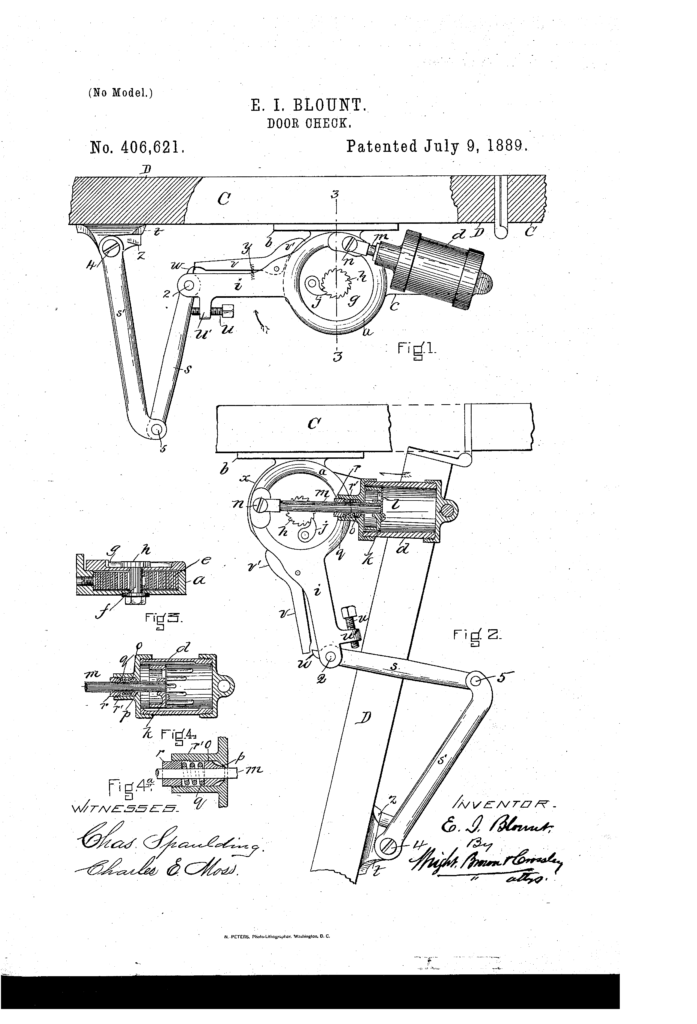Note: The following is a republished excerpt from the Lockwood Hardware Manufacturing Company’s Lockwood – The story of its past, the basis for its future. Published in 1953, and based almost entirely off of literature produced for Lockwood’s 1952 sales convention, it recounts the history of the Lockwood Hardware Manufacturing Company from 1834 until 1952.
By 1953, the Lockwood Hardware Manufacturing Company, then a division of the Independent Lock Company with both being headquartered in Fitchburg, Massachusetts, fielded branch offices in New York City, Philadelphia, Baltimore, Chicago, and Selma, Alabama along with five manufacturing plants in Fitchburg and one in Selma.
We have made no changes to this excerpt and what you see is exactly how it was printed in 1953, albeit in a different medium.

Chapter Three, The Lockwood Manufacturing Company 1910 to 1931
IN THIS CHAPTER is recorded the real rise and fall of the old Lock Company as a factor in the builders’ hardware field of the period from 1910 to 1931. Like the old Nashua Lock Company reported in Chapter One, Lockwood Manufacturing Company of South Norwalk, Conn., had its successes and, in later years, its disappointments and final sale to a stronger organization.
By 1910, Lockwood was well established in the builders’ hardware industry. The extensive line, then being marketed, can be well visualized when we find, in the year 1814, a new catalog being published having over 700 pages. While it is probably true, stock hardware sales was the predominating part of the business, it is also true, Lockwood had become very much of a factor in the contract field. In those days, it was customary for manufacturers and distributors alike to maintain a fine sample room. When a large contract was to be let, the factory provided huge trunks of hardware samples to be displayed.
Unfortunately, many of the early records of contract jobs were not preserved, or if so, they were not transferred to the Independent Lock Company. From what meager information we do have, however, we know that Lockwood hardware was supplied on some of the outstanding buildings in the country during this period, many of which are still standing. Some of them were:
THE AUDITORIUM, Los Angeles, California
U.S. POST OFFICE & COURT HOUSE, Los Angeles, California
HIGH SCHOOL BUILDING, Sacramento, California
ST. FRANCIS HOTEL, San Francisco, California
U.S. TREASURY BUILDING, San Francisco, California
THE PENINSULA HOTEL, San Mateo, California
THE HAMILTON HOTEL, Washington D.C.
MASONIC TEMPLE, Jacksonville, Florida
ST. PAUL’S EPISCOPAL CHURCH, Atlanta, Georgia
ROCHAMBEAU APARTMENTS, Baltimore, Maryland
THE SOUTHERN HOTEL, Baltimore, Maryland
HORTICULTURAL HALL, Boston, Massachusetts
TECHNOLOGY CHAMBERS, Boston, Massachusetts
THE AUDITORIUM, St. Paul, Minnesota
FIRST PRESBYTERIAN CHURCH, Kansas City, Missouri
VICTOR BUILDING, Kansas City, Missouri
STATE SAVINGS BANK BUILDING, Butte, Montana
THE STATE CAPITOL, Albany, New York
ST. GEORGE HOTEL, Brooklyn, New York
71st REGIMENT ARMORY, New York, New York
THE WORLD’S TOWER BUILDING, New York, New York
HOTEL SYRACUSE, Syracuse, New York
U.S. POST OFFICE BUILDING, Dayton, Ohio
STOCK EXCHANGE, Philadelphia, Pennsylvania
Y.M.C.A., Philadelphia, Pennsylvania
PUBLIC LIBRARY, Salt Lake City, Utah
RANDOLPH – MACON WOMEN’S COLLEGE, Lynchburg, Virginia Continue reading →


